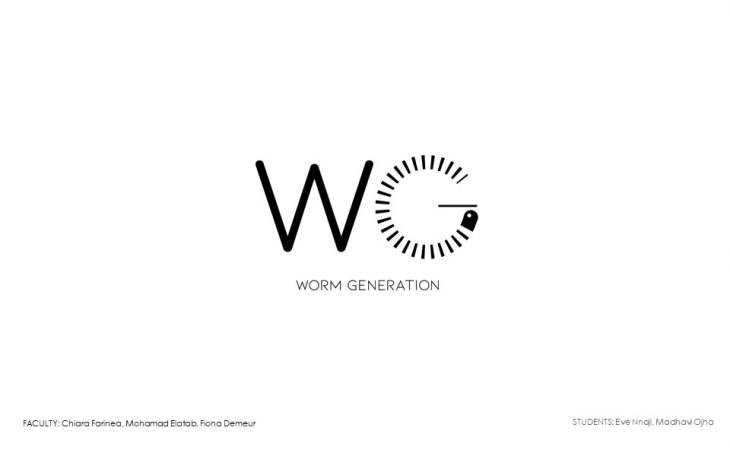
Our environment, globally, is in a current state of distress. Our oceans continue to accumulate improperly discarded waste. The most visible waste it has inherited is plastic waste which comes in various forms. Among the plastic family is Styrofoam, a material that is in a constant state of production.
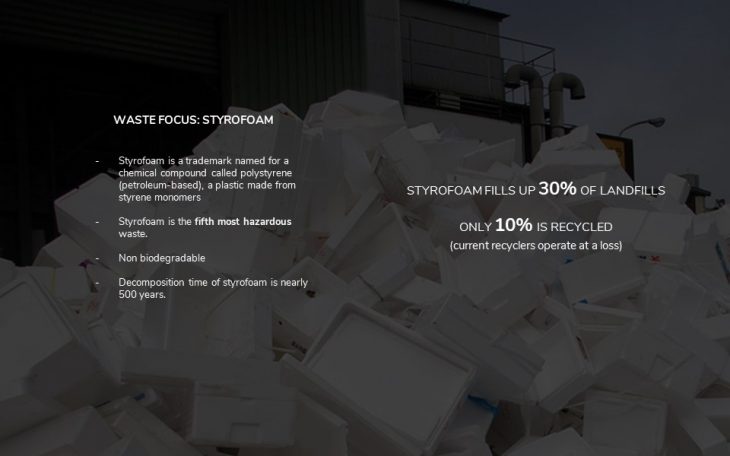
Because of the current structure of our customer-product relationship, manufacturers are producing excess amounts of materials. The diagram below illustrates the current structure.
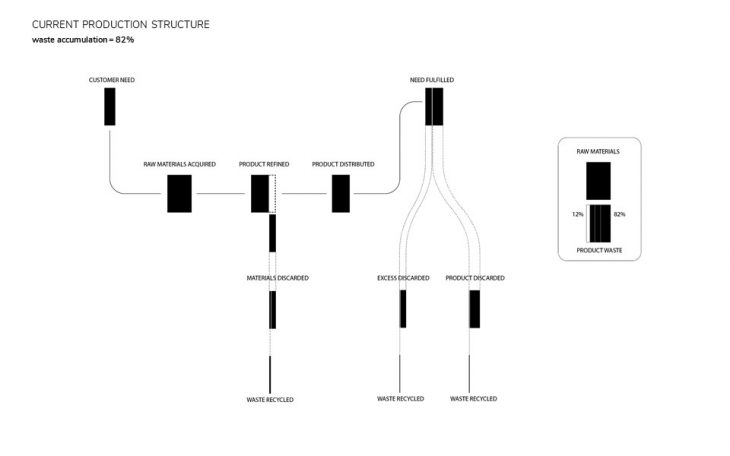
This project’s goal aims, not only to recycle Styrofoam waste, but to eliminate it as well by converting it into organic matter. The diagram below shows where the project aims to position itself.
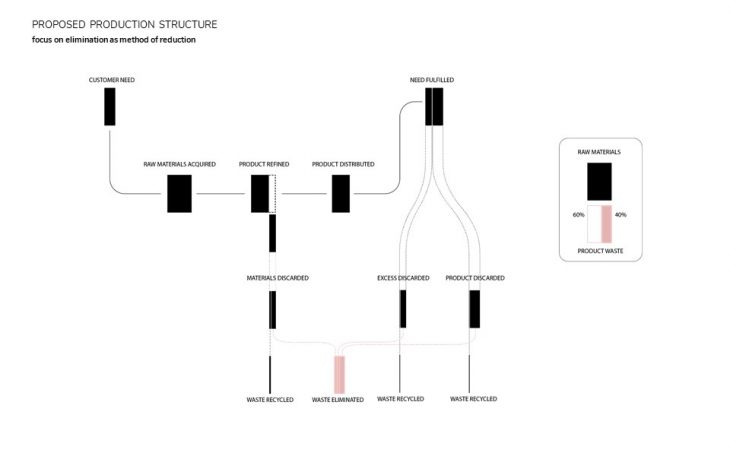
A current study shows that mealworms can safely consume Styrofoam and convert it into organic waste matter.
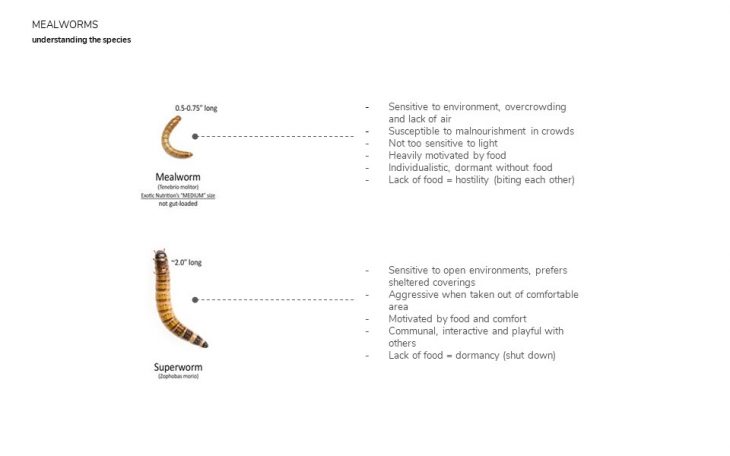
Tests
The types of worms were acquired to start testing the viability of this proposal, the mealworm and the superworm, both are the same species of worms. The first set of tests done was to prove the concept.
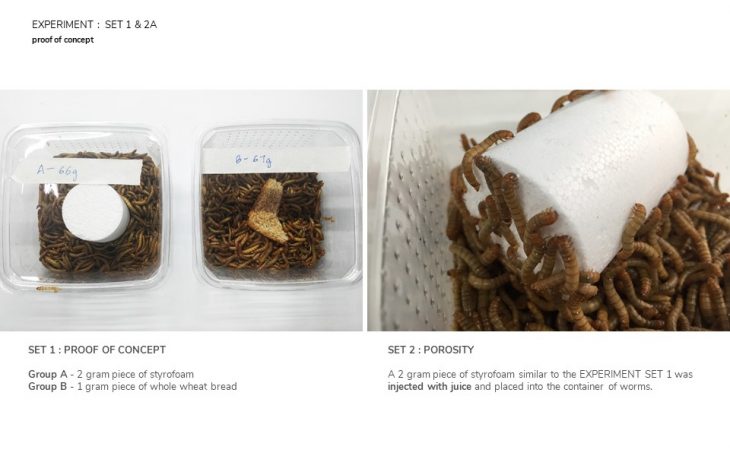
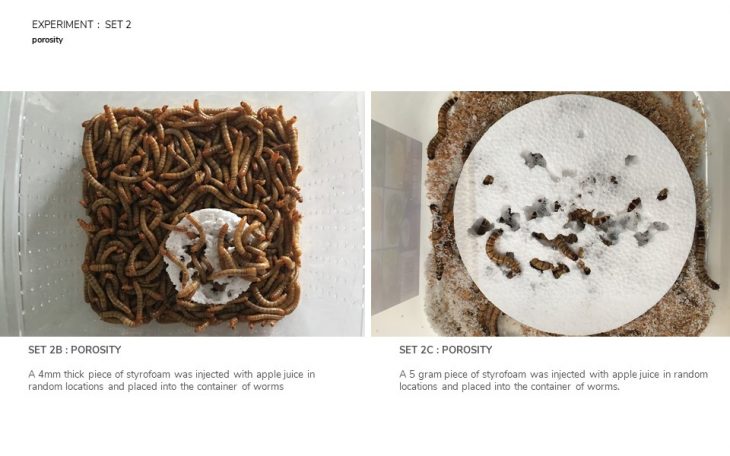
In order for the worms to penetrate the Styrofoam, a syringe was used to inject juice into the Styrofoam. The worms then had an incentive to dig deeper in the Styrofoam.
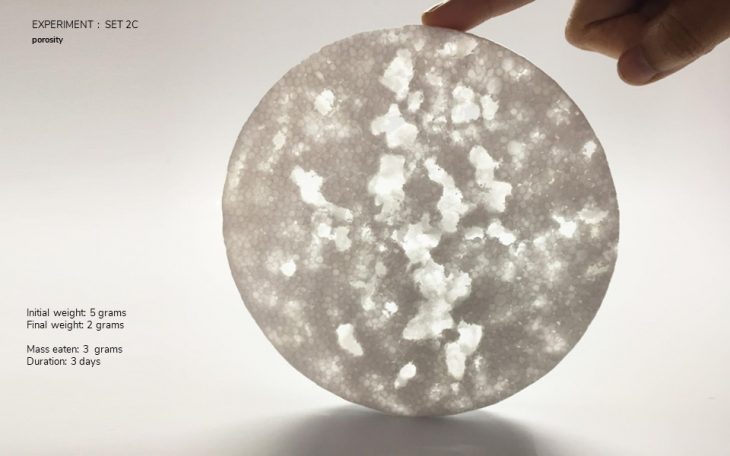
The next set of tests were carried out to test the control of the worm’s eating pattern using juice in specific regions.
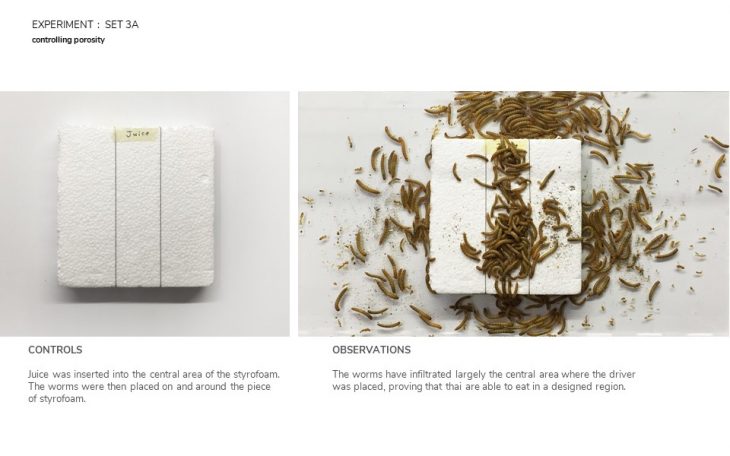
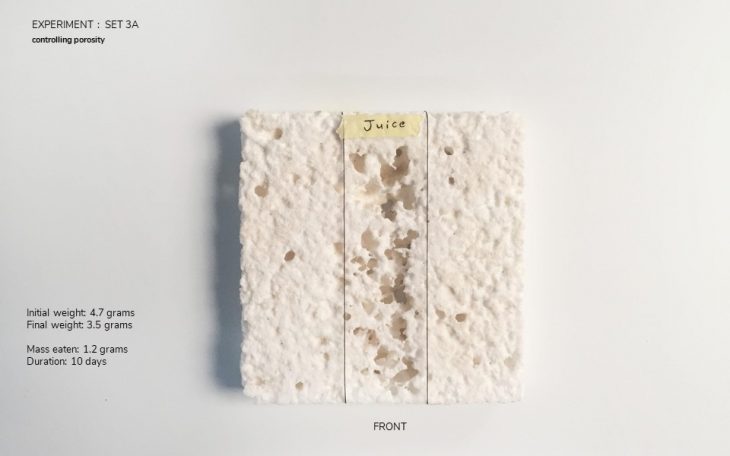
Upon proving that the eating pattern of the worms could be controlled, several tests were carried out to see how much control could be gained. The following images were taken daily in order to track eating patterns.
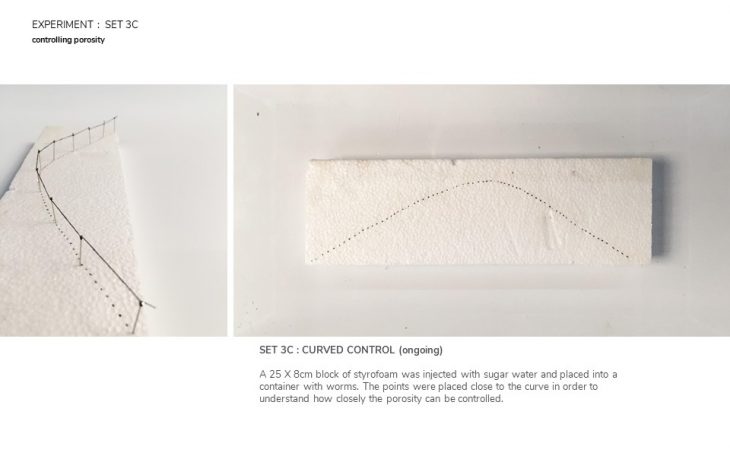
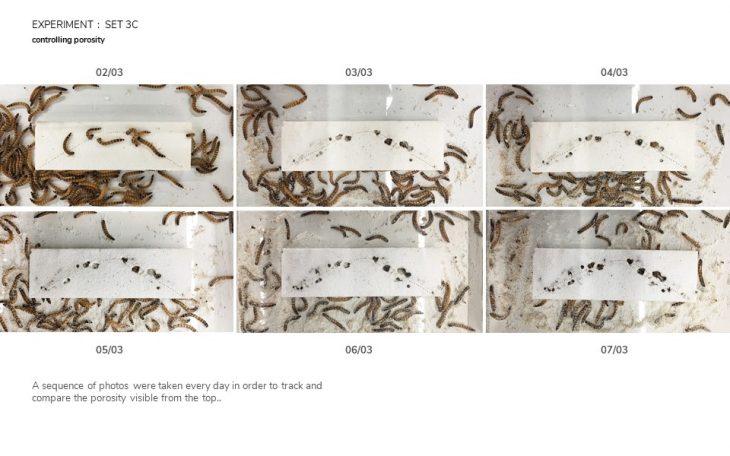
After several sets of tests, multiple groups of worms were left in the Styrofoam remnants after a bit of messy eating. This was done in order to track the composition of the remnants. In theory, the remnants would turn brown and obtain a new consistency if it was being converted into organic matter. The image below proves the theory.
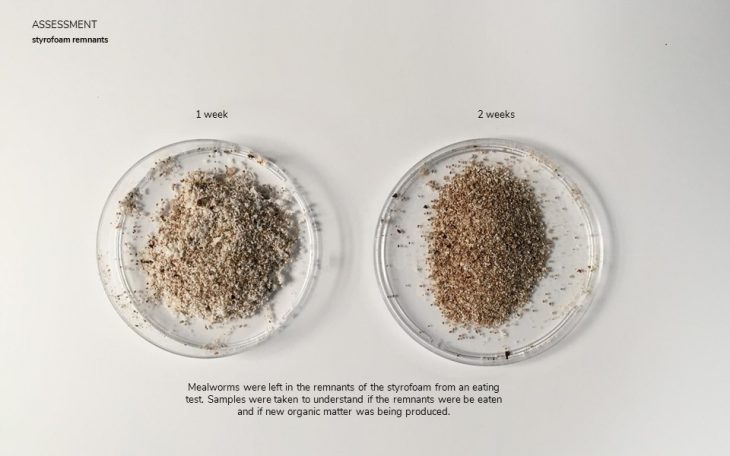
With the recorded data from all the experiments, 6 well controlled sets were used to calculate the average eating rate for both the mealworm and the superworm. The following estimates were made based on the rates.
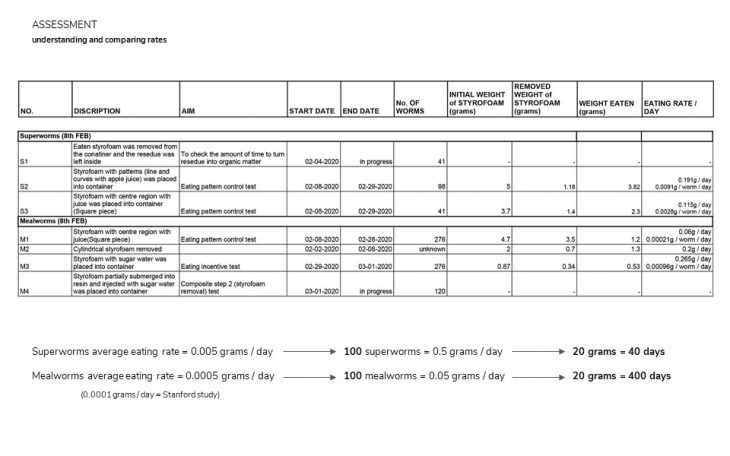
With the data and gathered understanding of the eating patterns, parameters were extracted to simulate the eating process and porosity creating of the worms. A curve was used to indicate the placement of the juice, points populating a geometry accounted for the amount of worms which were then pulled towards the curve. The strength of the porosity was used to simulate the factor of time. With these parameters porosity was able to be simulated.
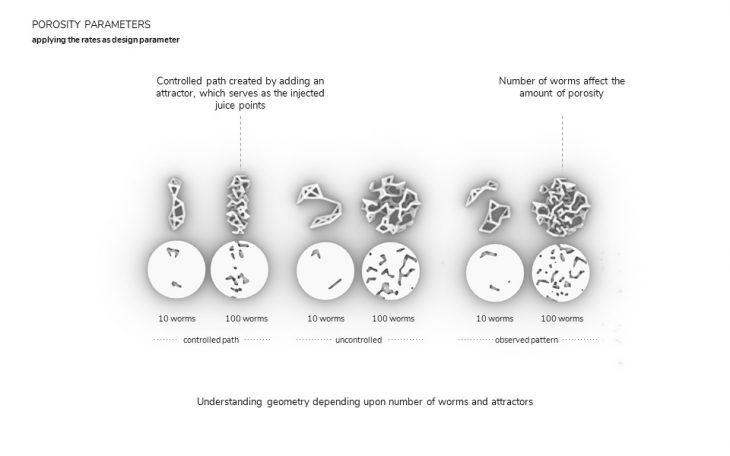
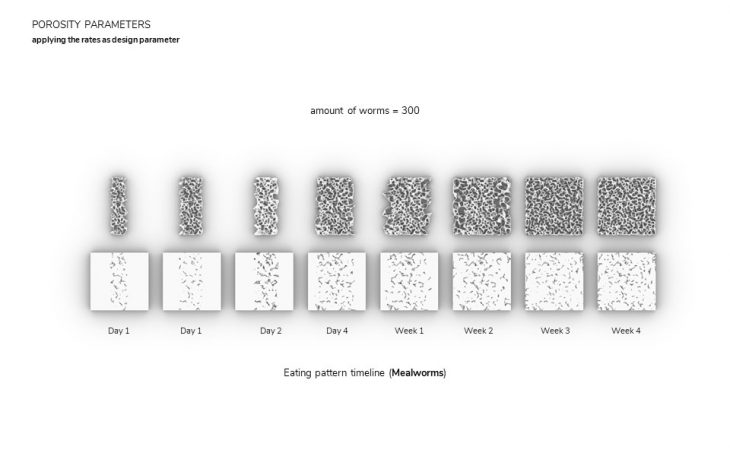
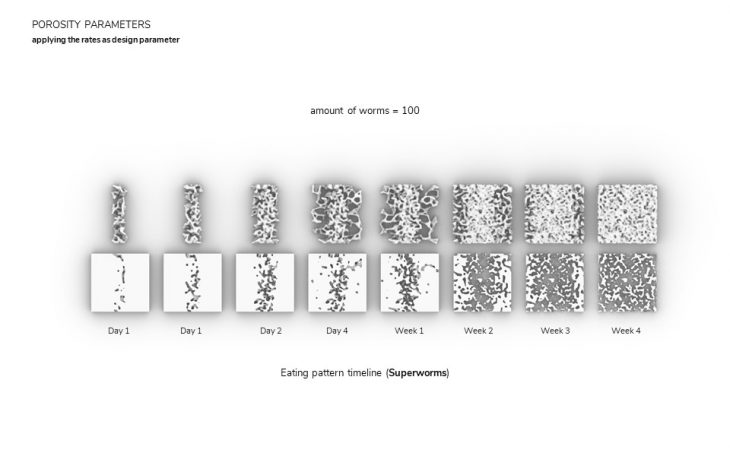
Proposal
The worms created porous structures within the styrofoam These structures were not only a factor of food but habitats for the worms to shelter themselves. The question was asked, what if these shelters can also be used to rehabilitate dying ecosystems?
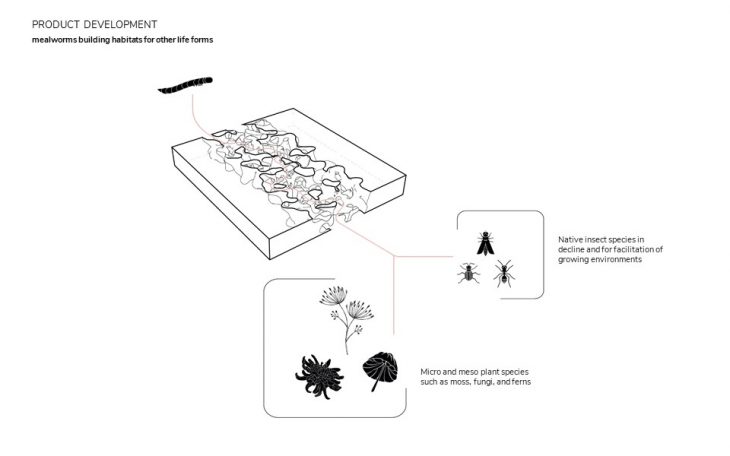
In order to make these porous structures safe for these animals and plants, it would need to be made safe for the whole environment. Several methods of coating and encapsulating were tested.
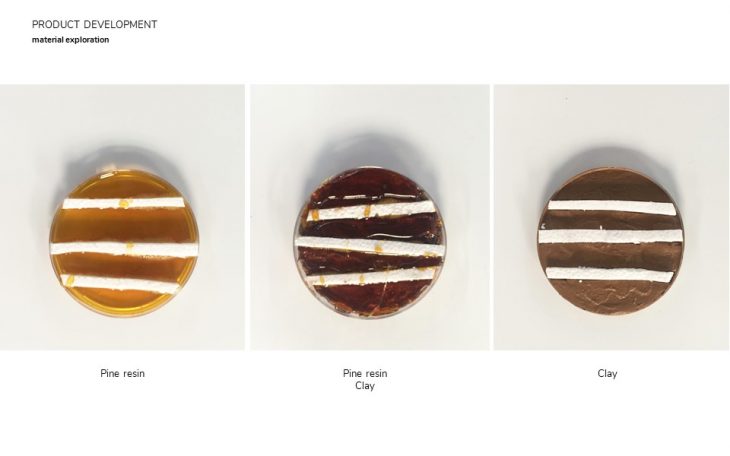

A proposal was then developed. The structure would be placed in several environments that had dying ecosystems in order to repopulate and create biodiversity.
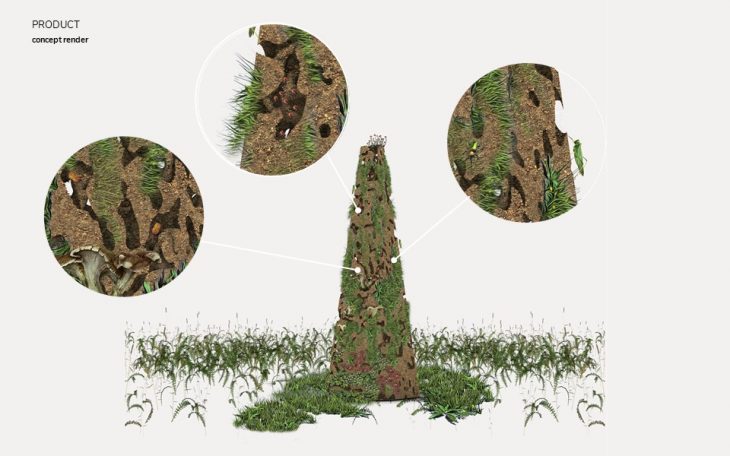
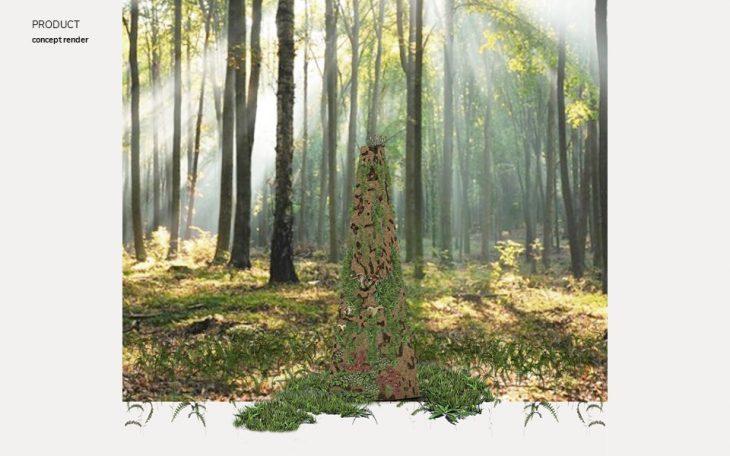
Visualisation


Students: Eve Nnaji, Madhavi Ojha
Faculty: Chiara Farinea, Mohamad Elatab, Raquel Villodres
Teaching Assistant : Fiona Clara Louise Demeurs